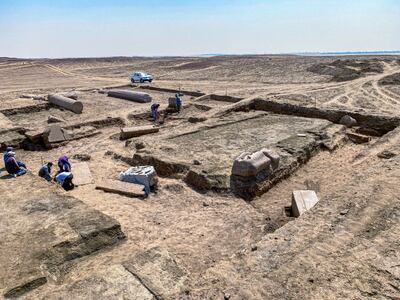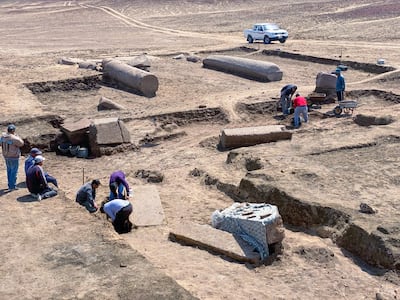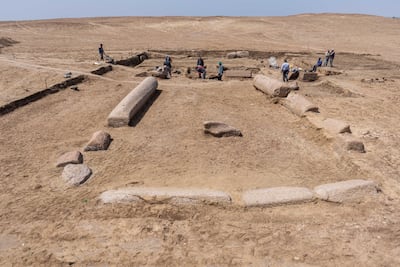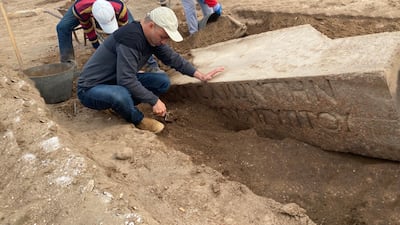Egyptian archaeologists excavating the city of Pelusium, in the Tell El Farma region of North Sinai, have uncovered the remains of an ancient temple dedicated to the god Zeus Cassius.
Zeus Cassius was connected with Mount Casius — also known as Jebel Agra — a limestone mountain on the Syrian-Turkish border near the Mediterranean.
Said to be based on the cult of a mountain god, conflated with Greek god Zeus, Zeus Cassius was worshipped mainly in Syria and Egypt, though there was also a temple in Greek island Corfu.
Parts of the Sinai temple were found about 200 metres from a colossal mud-brick complex dating back to the Greco-Roman period — between the eighth century BC and sixth century AD — discovered in 2019, Egypt's Ministry of Tourism and Antiquities said.
The archaeological mission, which is managed by the Supreme Council of Antiquities, is part of a government plan to develop the Sinai Peninsula and open more of it to tourists.

The mission was first alerted to the location of the temple when they found the remains of an ancient stone gateway that had been destroyed by an earthquake centuries ago.
“The location of the discovered temple was determined based on the presence of the remains of a huge gate on the surface of the earth that collapsed in the past due to a strong earthquake that struck the city,” said Dr Mostafa Waziri, Secretary General of the Supreme Council of Antiquities.
Archaeologists suspected that the gate — which consisted of two massive columns supporting a giant stone slab, all made of pink granite — had to be the entrance to a place of significance.
The temple itself, however, was built with mud bricks.
Near the temple, several other large blocks of pink granite were also found, which led some on the mission to believe that the site was later repurposed as a stone quarry.

The ministry said the same pink granite was used to construct the city’s ancient churches, the remains of which are at Pelusium today.
“The archaeological mission succeeded in revealing for the first time the remains of the temple, which was built of mud bricks on a raised platform of rubble and broken stones, and its ceiling bears columns of pink granite,” said Dr Ayman Ashmawy, head of the Egyptian antiquities section at the Supreme Council of Antiquities.
Historians have found evidence that Pelusium was an established city since the early first millennium BC. This places the city in the late Pharaonic period. It was also an important city in Greco-Roman and Byzantine times.
It has a special significance in Christian scripture, where it is mentioned as the gate into Egypt from the Holy Land that the child Jesus, Mary and Joseph used to enter Egypt.



